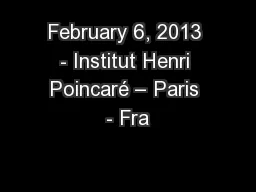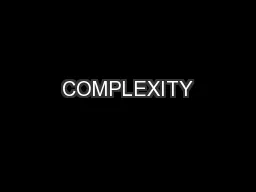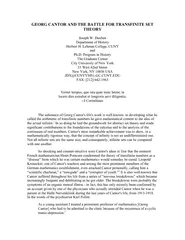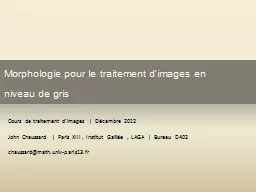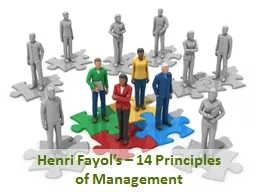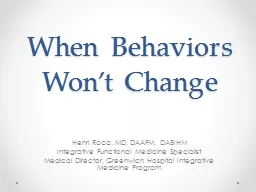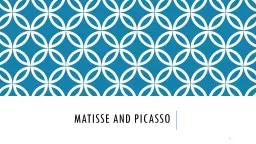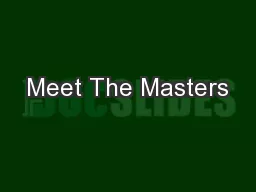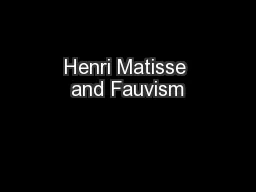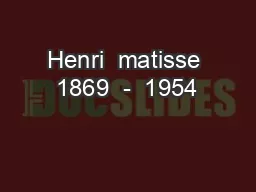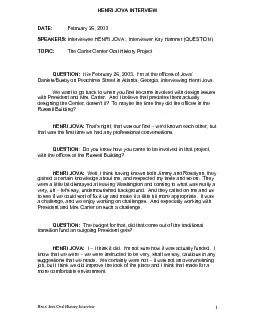PPT-February 6, 2013 - Institut Henri Poincaré – Paris - Fra
Author : lindy-dunigan | Published Date : 2016-05-01
Mathematics of BioEconomics MABIES Quantitative tools for the sustainable recovery of the hake Merluccius Gayi Gayi in the Region o f Valparaiso Chile Project
Presentation Embed Code
Download Presentation
Download Presentation The PPT/PDF document "February 6, 2013 - Institut Henri Poinca..." is the property of its rightful owner. Permission is granted to download and print the materials on this website for personal, non-commercial use only, and to display it on your personal computer provided you do not modify the materials and that you retain all copyright notices contained in the materials. By downloading content from our website, you accept the terms of this agreement.
February 6, 2013 - Institut Henri Poincaré – Paris - Fra: Transcript
Download Rules Of Document
"February 6, 2013 - Institut Henri Poincaré – Paris - Fra"The content belongs to its owner. You may download and print it for personal use, without modification, and keep all copyright notices. By downloading, you agree to these terms.
Related Documents

